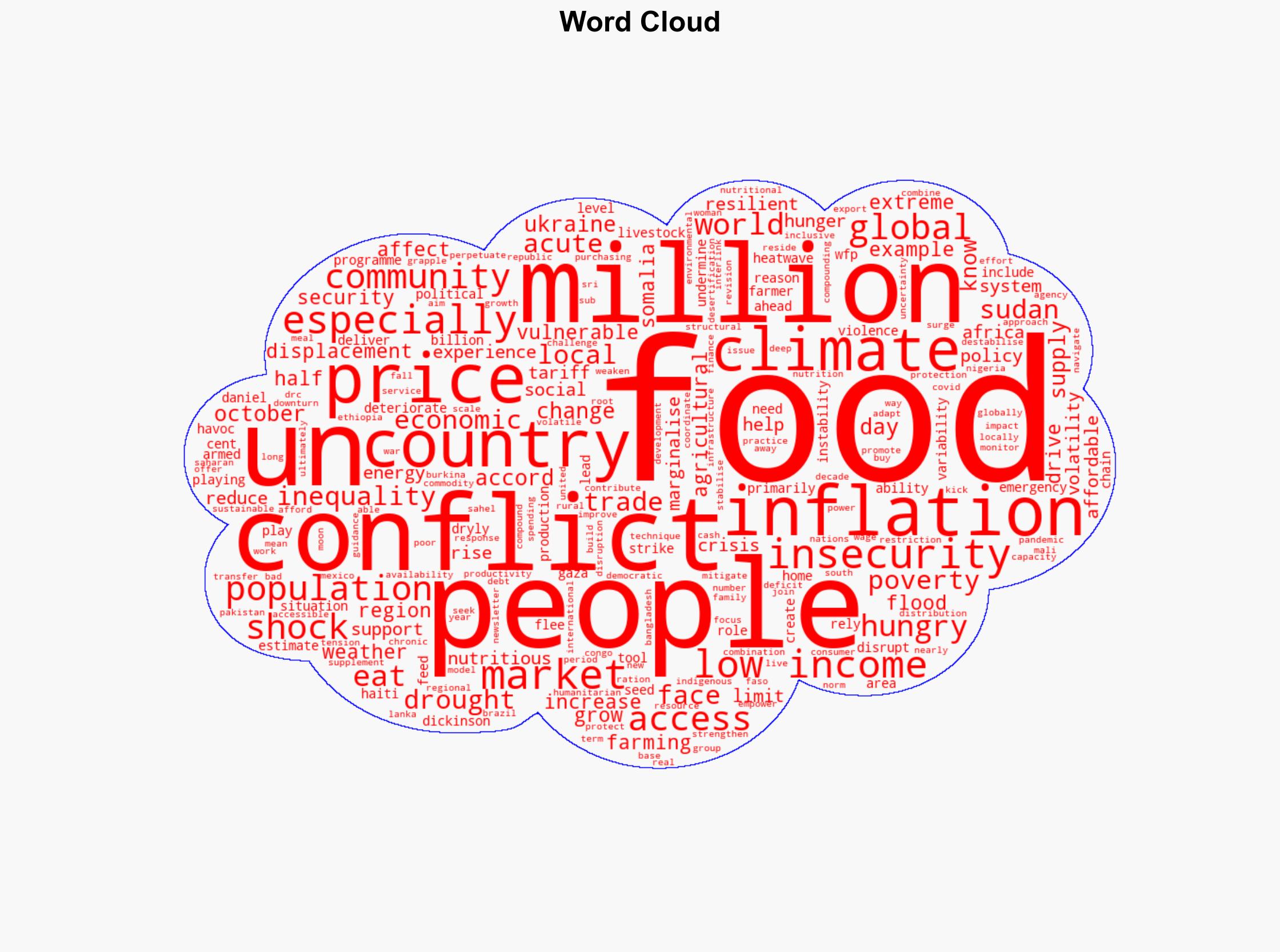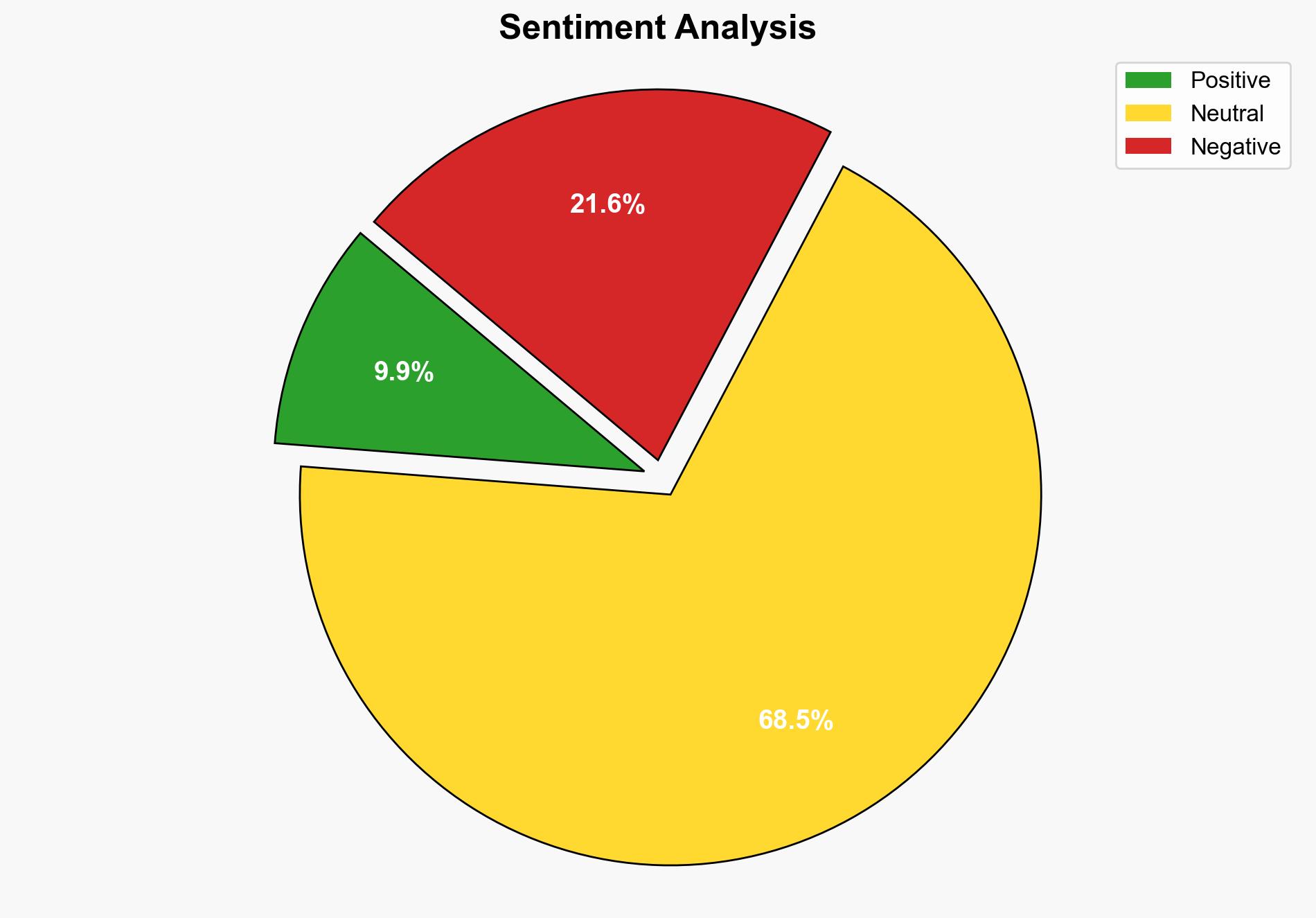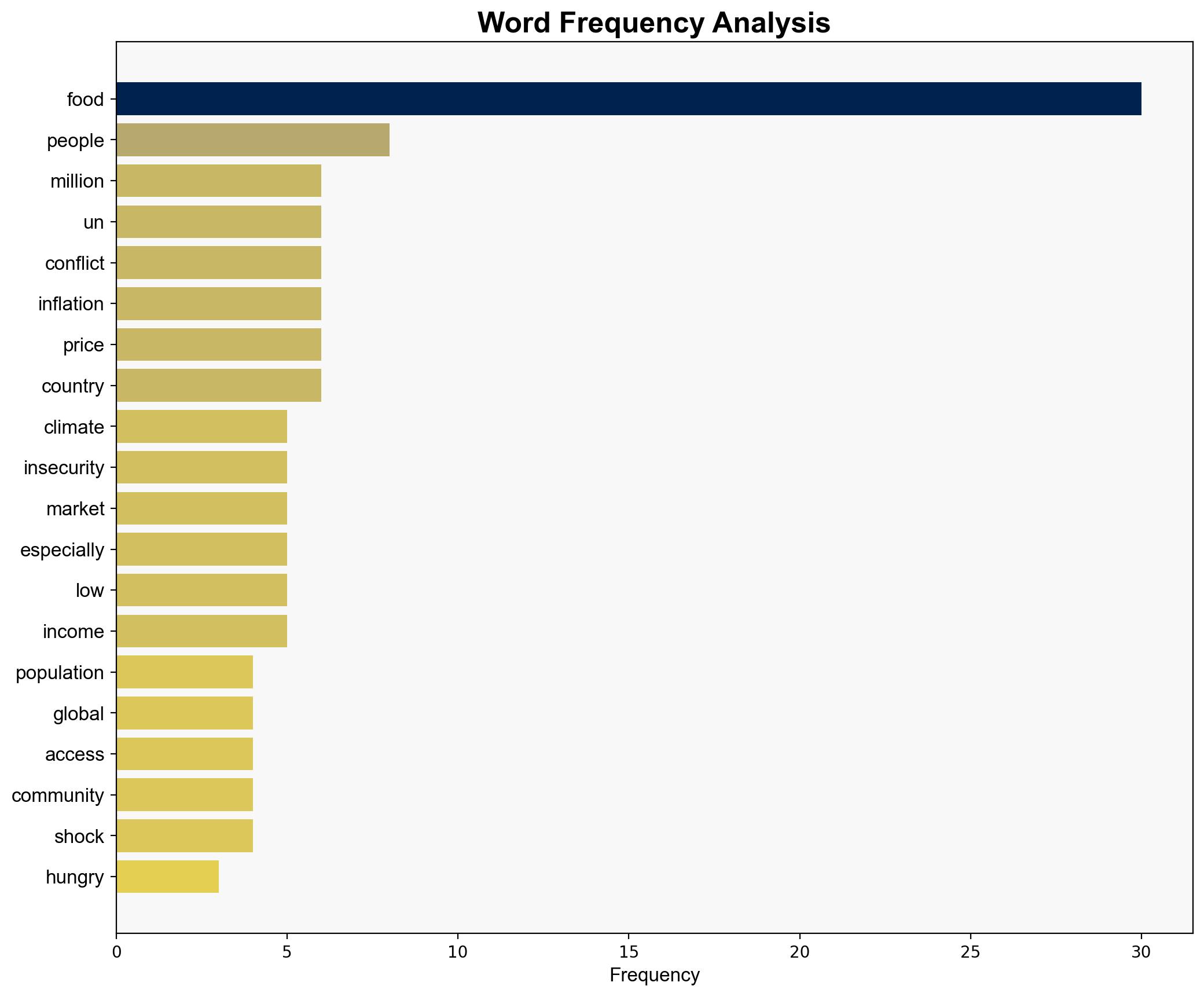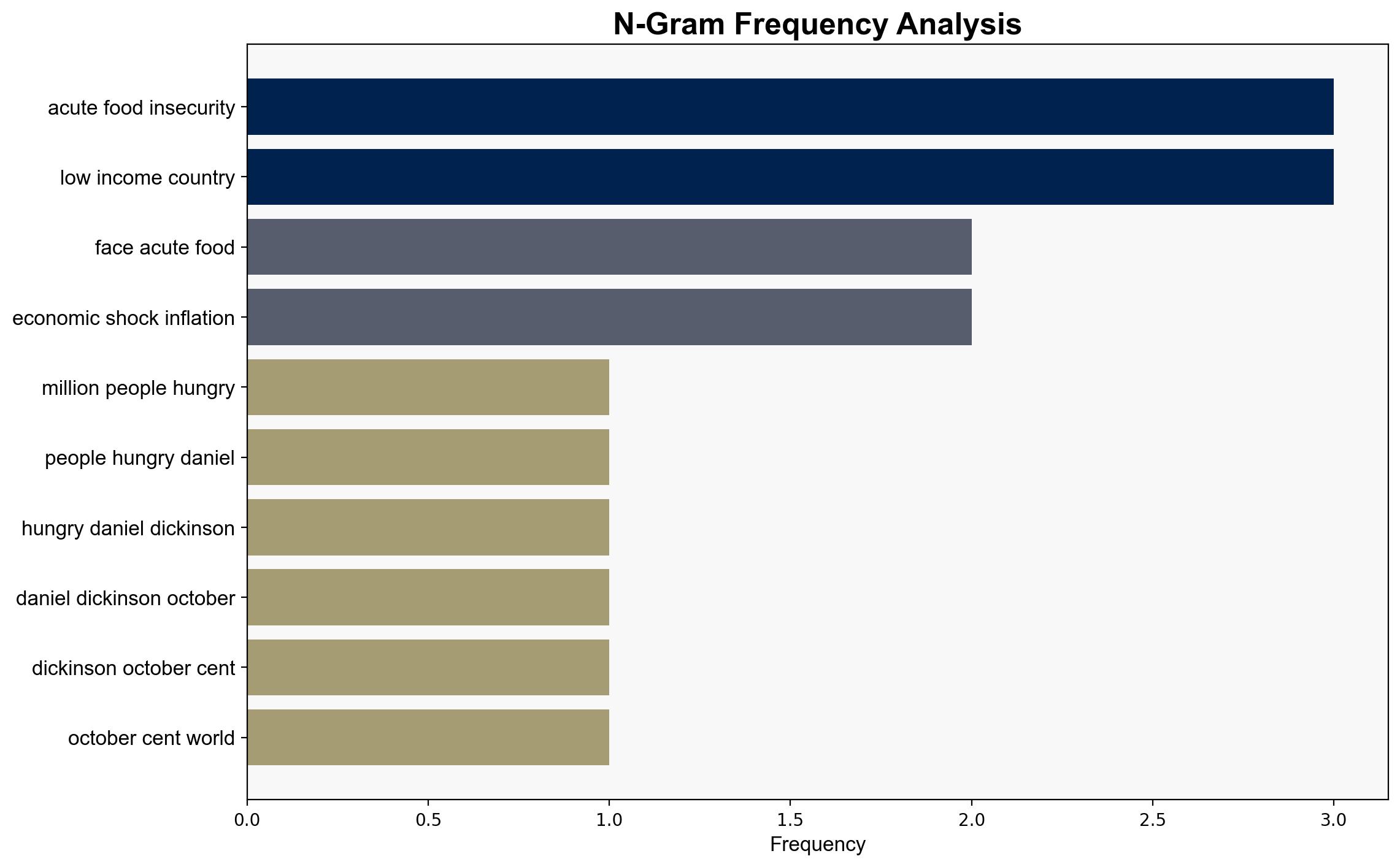Why are over 670 million people going hungry – Globalsecurity.org
Published on: 2025-10-21
Intelligence Report: Why are over 670 million people going hungry – Globalsecurity.org
1. BLUF (Bottom Line Up Front)
The most supported hypothesis is that a combination of conflict, climate change, and economic instability are the primary drivers of global hunger, affecting over 670 million people. This conclusion is drawn with moderate confidence due to the multifaceted nature of the issue and the complexity of verifying data across diverse regions. Recommended actions include enhancing international cooperation to address these root causes, particularly focusing on conflict resolution and climate adaptation strategies.
2. Competing Hypotheses
1. **Hypothesis A**: The primary cause of global hunger is the disruption of food production and supply chains due to ongoing conflicts and political instability, particularly in regions like Ukraine, Sudan, and Gaza.
2. **Hypothesis B**: Climate change and economic shocks, including inflation and rising food prices, are the predominant factors leading to widespread hunger, exacerbated by inadequate infrastructure and social inequality.
Using ACH 2.0, Hypothesis A is supported by direct evidence of conflict-related disruptions, while Hypothesis B is supported by broader economic and environmental data. Cross-Impact Simulation suggests that while both factors are significant, their interplay is critical, with conflicts often exacerbating the impacts of climate change and economic instability.
3. Key Assumptions and Red Flags
– **Assumptions**: It is assumed that data from UN agencies accurately reflects the current situation and that reported conflicts directly correlate with food insecurity levels.
– **Red Flags**: Potential bias in attributing equal weight to all factors without considering regional variations. Inconsistent data on the impact of climate change across different regions may lead to underestimating its role.
– **Blind Spots**: Lack of detailed analysis on how specific local governance issues and corruption may further exacerbate food insecurity.
4. Implications and Strategic Risks
The interplay of conflict, climate change, and economic instability poses a significant risk of escalating humanitarian crises, potentially leading to increased migration and regional instability. Economic downturns may further strain international aid efforts, while climate change could lead to irreversible damage to agricultural systems, particularly in vulnerable regions.
5. Recommendations and Outlook
- Enhance international diplomatic efforts to resolve ongoing conflicts, with a focus on regions most affected by food insecurity.
- Invest in climate-resilient agricultural practices and infrastructure to mitigate the impacts of climate change.
- Strengthen global economic policies to stabilize food prices and improve access to markets for low-income countries.
- Scenario Projections:
- **Best Case**: Successful conflict resolution and climate adaptation lead to a significant reduction in global hunger.
- **Worst Case**: Continued conflict and climate deterioration result in increased hunger and migration crises.
- **Most Likely**: Incremental improvements in some regions, but persistent challenges in others due to ongoing conflicts and climate variability.
6. Key Individuals and Entities
– Daniel Dickinson
– United Nations (UN)
– World Food Programme (WFP)
7. Thematic Tags
national security threats, climate change, economic instability, food security, conflict resolution





